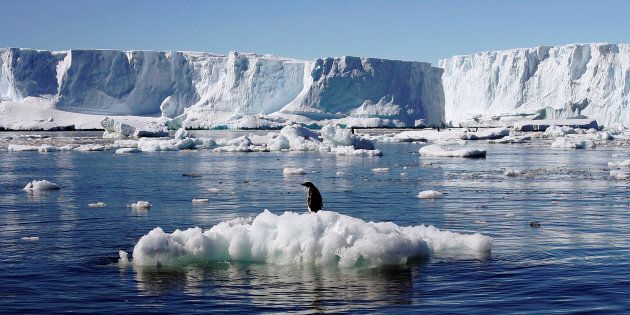
The massive Totten glacier, in east Antarctica, is one of the world's most remote locations. It holds so much ice that, if melted, sea levels would rise by 3.5 metres across the globe.
Scientists have now confirmed that, yes, the Totten glacier is indeed melting. Warm water in the seas of Antarctica is causing the glacier to melt from below. That's not good news.
Scientists on Australia's Aurora Australis icebreaker ship gathered what they say was the first oceanographic data from the Totten in 2014-15. Satellite data showed that the glacier was thinning fast, and the hypothesis was that it was melting from below due to warmer sea water, so the scientists needed to get closer to take precise measurements.
"We discovered a large channel in front of the western side of the Totten Glacier which is around 10 kilometres wide and up to a kilometre deep," said Dr Steve Rintoul, lead author of the report and Interim Director of CSIRO's Climate Science Centre.
"We found that warm ocean water is reaching the ice shelf through this channel, with temperatures high enough to drive rapid melt of the underside of the ice shelf."
In research published in Science Advances, scientists found warm water in the area "exceeds the in situ freezing point by more than 2.2°C", leading to the thinning of the glacier. The "warm" water is still below freezing point, but at the depths where the melting is occurring, this temperature is still warm enough to melt the basal ice.
Glaciologists estimate that the Totten is losing 63 billion to 80 billion tonnes each year to basal melt, the highest melt rate of any large East Antarctic ice shelf and one of the highest (if not the highest) on the whole continent.
The Totten is hundreds of metres thick at points, but the warm water is feared to be melting several metres of thickness per year.
"If warm ocean waters drive more rapid melt of the Totten and other ice shelves around the edge of Antarctica, more glacial ice can flow into the ocean, raising sea level," Dr Rintoul said.
"The Totten is a big glacier, the largest in East Antarctica, and it contains enough ice to raise global sea levels by about 3.5 metres if it all melted, so it is important to know how it will behave in the future."
ALSO ON HUFFPOST AUSTRALIA